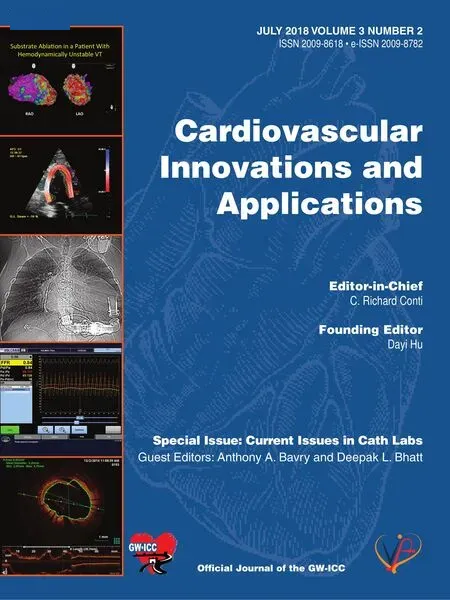Chronic Pericarditis
C. Richard Conti, MD, MACC
Introduction
Chronic pericarditis is inflammation that begins gradually, is long lasting and results in fluid accumulation in the pericardial space or thickening of the pericardium.
There are two main types of chronic pericarditis a) chronic effusive pericarditis, fluid slowly accumulates in the pericardial space between the two layers of the pericardium. Usually the cause of chronic effusive pericarditis is unknown but it maybe be cancer, TB or hypothyroidism. b) Chronic constrictive pericarditis is a rare disease that usually results when scar or fibrous tissue forms throughout the pericardium. The fibrous tissue tends to contract over the years compressing the heart thus the heart may not enlarge as it does in most types of heart disease. Usually the cause of chronic constrictive pericarditis is also unknown the most common known causes are viral infections and radiation therapy for breast cancer or lymphoma.
Previously tuberculosis (TB) was the most common cause of pericarditis in the U.S. but today TB counts for only 2% of cases. In Africa and India,tuberculosis is still a common cause of all forms of pericarditis.
Etiology of Chronic Pericarditis
Recent data from Cleveland Clinic in chronic pericarditis patients undergoing pericardiectomy,revealed that 45% of the patients were idiopathic,36% post-surgical, 9% post radiation and 9% had misc. chest pain including 6 patients with TB pericarditis.
Hemodynamics of Chronic Pericarditis and Restrictive Cardiomyopathy
As virtually all filling of the ventricle occurs very early in diastole. Waveforms in ventricular volumetime plots of patients with constrictive pericarditis reveals a characteristic dip and plateau √.
The early diastolic dip corresponds to the period of rapid filling while the plateau corresponds to the period of mid and late diastole when there is little addition of ventricular volume expansion.
It is not easy to differentiate constriction from restriction. Hemodynamics can be similar. When there is marked right ventricular systolic hypertension (pressure greater than 60 millimeters of mercury), it is suggestive that the patient has a restrictive cardiomyopathy not constrictive pericarditis.
Patient with constrictive pericarditis during inspiration give evidence of an increase in the area of the RV pressure curve compared with expiration. In contrast there may be a decrease in the area of the RV pressure curve in a patient with restrictive myocardial disease during inspiration as compared with expiration. M mode echo reveals that the septum shifts from the RV to the LV. As the RV pressure plateaus, increased pressure due to filling of the LV shifts the septum back.
Chest X-ray and CT of Chronic Pericarditis
Usually there is a normal or mildly enlarged cardiac silhouette. Calcification of the pericardium is detected in up to 50% of patients and is best seen in the lateral projection. Normally the pericardium is less than 3 millimeters in thickness but in Chronic pericarditis is it usually 6 millimeters thick or more.This can be determined my magnetic resonance or computed CT.
Symptoms of Chronic Pericarditis
Symptoms of pericarditis (shortness of breath,coughing and fatigue coughing occurs because of the high pressure in the pulmonary veins, fatigue occurs because of decreased cardiac output when the demand increases and ascites and peripheral edema because of high right atrial pressure and protein loss, pleural effusions occur occasionally.
If the fluid accumulates slowly chronic effusive pericarditis may produce few symptoms, the reason is that the pericardium can stretch gradually however if fluid accumulates rapidly the heart can become compressed and cardiac tamponade may occur.
Physical Findings in Chronic Pericarditis
• Elevated JVP is an almost universal finding.
• Sinus tachycardia
• Atrial fibrillation occurs in almost half of the patients with constrictive pericarditis. This is questionably related to pericardial calcification or periatrial myocardial inflammation.
• Apical impulse is often impalpable.
• Pulses paradoxus is a variable finding
• Kussmaul sign (elevation of systemic venous pressure with inspiration) is often seen.
• Hepatomegaly with prominent systolic pulsations.
• Ascites
• Peripheral edema (a common finding).
Ausculation of Chronic Pericarditis
The most impressive abnormality occurs during ausculation during which time the characteristic diastolic pericardial “knock” is heard. The “knock”occurs at the termination of early diastolic filling and the timing is approximately the same as a S3.It can be heard in many patients with constrictive pericarditis.
Problems and Diagnosis of Chronic Pericarditis
• Diagnosis is not considered.
• Primary manifestations of constriction are obscured by secondary symptoms and physical findings.
• Other cardiac disease obscures the presence of constriction.
Treatment of Chronic Pericarditis
The only possible cure is surgical removal of the pericardium. Surgery cures about 85% of people however because of the risk of death from surgery being 5–15%; most people elect not to have surgery unless the disease substantially interferes with daily activity. Pericardiectomy, which includes complete resection of the pericardium from phrenic nerve to phrenic nerve probably, should not be routinely attempted in very elderly patients with severe liver dysfunction, cachexia, densely calcified pericardium and massive cardiac enlargement indicative of underlining myocardial damage or with patients with limited life expectancy.
 Cardiovascular Innovations and Applications2018年3期
Cardiovascular Innovations and Applications2018年3期
- Cardiovascular Innovations and Applications的其它文章
- Cardiovascular Innovations and Applications
- The Contemporary Role of Femoral Artery Access
- Persisting Angina after Successful Surgical Removal of a Large Coronary Artery Aneurysm Attached to the Proximal Portion of the Left Circumflex Artery: Role of Coronary Artery Spasm
- Speckle Tracking Echocardiography ldentifies lmpaired Longitudinal Strain as a Common Deficit in Various Cardiac Diseases
- Bioresorbable Vascular Scaffold in the Midportion of the Left Anterior Descending Artery for Cardiac Allograft Vasculopathy in a Cardiac Transplant Patient
- The Use of Direct Oral Anticoagulants for Prevention of Stroke and Systemic Embolic Events in East Asian Patients with Nonvalvular Atrial Fibrillation
